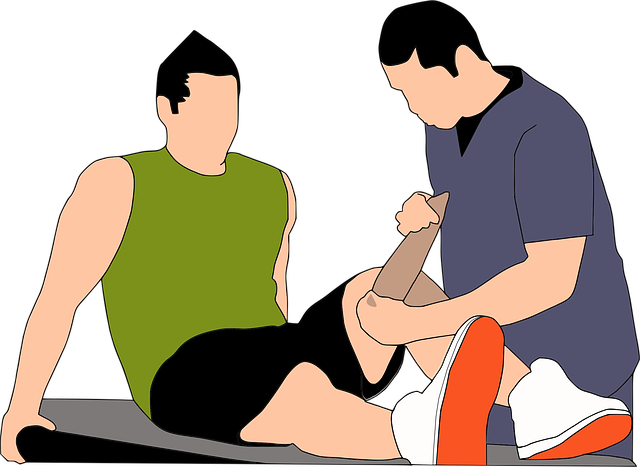CBT therapy is a goal-oriented talk therapy addressing negative thought patterns through cognitive restructuring. By challenging and replacing irrational beliefs with realistic perspectives, CBT improves emotional well-being and mental health conditions. This process involves critically evaluating thoughts, enhancing resilience, and integrating healthier thinking into daily life. Mindfulness practices support cognitive restructuring for stress, anxiety, or depression management.
Therapeutic cognitive restructuring, a cornerstone of Cognitive Behavioral Therapy (CBT), empowers individuals to challenge and transform negative thought patterns into more realistic and adaptive ones. This transformative process involves understanding CBT’s core principles, identifying distorted beliefs, and adopting effective coping strategies. By integrating these techniques into daily life, people can achieve better emotional regulation and cultivate a more balanced mindset. Explore these essential steps to unlock the potential of CBT therapy.
Understanding CBT Therapy's Core Principles

Cognitive Behavioral Therapy (CBT) is a structured and goal-oriented form of talk therapy that focuses on identifying and changing negative thought patterns and behaviors. At its core, CBT rests on the understanding that our thoughts, feelings, and actions are interconnected—a concept known as the cognitive triad. By modifying these thought processes, individuals can experience improvements in their emotional well-being and overall functioning.
The primary goal of CBT is to empower individuals with effective coping strategies by teaching them to challenge and replace irrational beliefs and automatic negative thoughts. This process involves a collaboration between the therapist and the client, where therapists guide patients through a series of steps to gain insight into their thinking patterns, evaluate the evidence for and against these thoughts, and ultimately reframe them in a more balanced and realistic light. This restorative approach has proven effective in treating a wide range of mental health conditions, making CBT a cornerstone of modern psychotherapy.
Identifying Negative Thought Patterns

Negative thought patterns are a key target in therapeutic cognitive restructuring, especially within the framework of Cognitive Behavioral Therapy (CBT). These patterns often manifest as automatic negative thoughts or distorted cognitions that contribute to emotional distress and maladaptive behaviors. By identifying these thought processes, individuals can begin to recognize the habitual ways their minds interpret situations, which is a critical step in CBT therapy.
Commonly, negative thought patterns include all-or-nothing thinking, overgeneralization, mental filtering, jumping to conclusions, and catastrophizing. For example, someone might think, “I failed one test, so I’m completely incompetent,” or “If I don’t achieve perfection, it’s a complete failure.” Therapeutic cognitive restructuring helps individuals challenge these thoughts, evaluate the evidence, and replace them with more balanced and realistic perspectives, fostering a healthier mental landscape.
Challenging Distorted Beliefs

Therapeutic cognitive restructuring, often incorporated into CBT (Cognitive Behavioral Therapy) therapy, focuses on identifying and challenging distorted beliefs that can negatively impact an individual’s thoughts and emotions. This process involves critically examining the evidence supporting or refuting these beliefs, which are frequently at the root of mental health issues like anxiety and depression. By questioning these cognitive distortions, individuals can gain a more balanced perspective, leading to improved emotional well-being.
One common technique is to identify automatic negative thoughts (ANTs) that pop up in response to certain situations. For instance, someone with social anxiety might have the distorted belief that they are always awkward and will be humiliated in social settings. A therapist would help this individual challenge such a belief by encouraging them to recall past experiences where they interacted successfully or to consider alternative explanations for others’ reactions. This restructuring involves replacing irrational thoughts with more realistic, positive ones, fostering healthier thought patterns and behaviors.
Developing Realistic and Adaptive Thoughts

Therapeutic cognitive restructuring, a core component of CBT (Cognitive Behavioral Therapy) therapy, focuses on transforming maladaptive thoughts into more realistic and adaptive ones. This process involves identifying negative or distorted thinking patterns that contribute to emotional distress and behavioral problems. By challenging these thoughts and replacing them with more balanced perspectives, individuals can gain a clearer understanding of themselves, their surroundings, and their interactions.
Developing realistic and adaptive thoughts requires active participation in re-evaluating one’s beliefs. Therapists guide clients to question the validity and usefulness of their current thought patterns. This involves exploring alternative explanations for situations, considering evidence that contradicts negative thoughts, and cultivating a more flexible mindset. Through this cognitive restructuring process, individuals learn to navigate life’s challenges with greater resilience, improving both their mental health and overall quality of life.
CBT Techniques for Emotional Regulation

Cognitive Behavioral Therapy (CBT) offers a range of techniques tailored for emotional regulation, making it a powerful tool in therapeutic practices. By identifying and challenging negative thought patterns, individuals can learn to manage their emotions more effectively. CBT encourages patients to question and replace distorted cognitions with more realistic and balanced perspectives. This process helps to reduce the intensity of emotional reactions and promotes healthier coping strategies.
One key technique is cognitive restructuring, where therapists guide clients in recognizing unhelpful thoughts and replacing them with alternative, more adaptive beliefs. This involves teaching individuals to challenge their negative assumptions, evaluate evidence for and against these thoughts, and ultimately develop a more rational and balanced view. Such interventions empower patients to better regulate their emotions, leading to improved mental well-being and enhanced quality of life.
Integrating Restructuring into Daily Life

Therapeutic cognitive restructuring, a key component of CBT therapy, is more than just a clinical practice; it’s a tool to transform daily experiences. Once individuals learn to identify and challenge negative or distorted thoughts, they can integrate this knowledge into their everyday lives. This process involves practicing mindfulness, especially during moments of emotional intensity, to catch those automatic negative thoughts before they spiral. For instance, if someone tends to ruminate on failures, they can be taught to acknowledge these thoughts without judgment and then actively reframe them with more realistic, balanced perspectives.
Over time, this restructuring becomes a natural part of one’s thought process, helping individuals respond to challenges with greater resilience and flexibility. It empowers them to navigate life’s ups and downs by replacing unhelpful cognitive patterns with healthier ones. By making these changes, people can improve their overall well-being and enhance their ability to manage stress, anxiety, or depression effectively.
